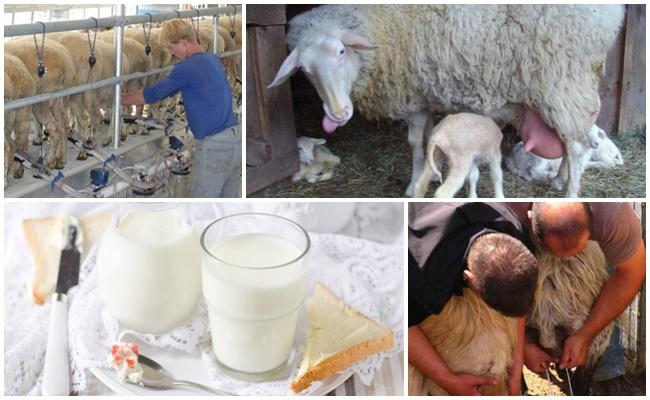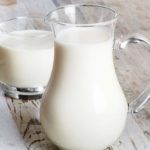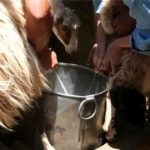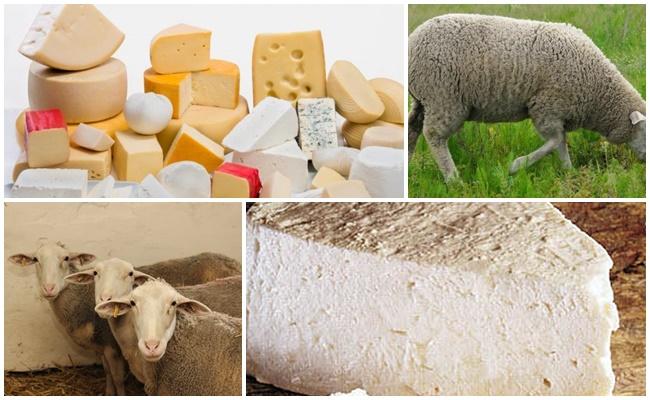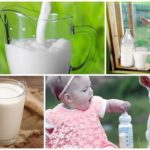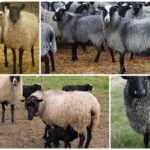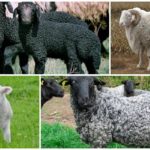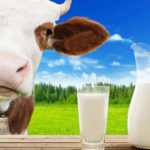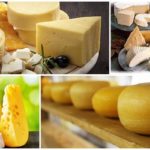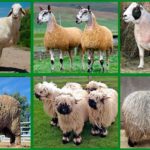Most people have never asked themselves whether sheep produce milk suitable for humans. Mammal animals feed their offspring with just this product. And, despite the specific smell and high fat content, the drink is a supplier of essential nutrients. In cooking, it is used to produce butter, kefir, yoghurt or valuable varieties of cheese.
How much milk does a sheep produce per day?
Depending on the breed, sheep provide from 1 to 3 liters of a valuable drink per day. The female produces milk when the lamb is born.The animal feeds its young for 3 or 4 months. During other periods, the udder remains empty.
After the lamb is taken from the female, productivity begins to decline under the influence of hormones. Milking increases the lactation period by another month. But then the ewe needs to rest to regain her strength before mating and the next pregnancy. It is impossible to produce milk all year round. Sheep produce milk about 4-5 months after reproduction.
Benefits and harms of the product
In most regions of Russia, residents drink cow's milk. But residents of the North Caucasus, Transbaikalia or Central Asia consider the drink obtained after milking sheep to be an elixir of health. But the product also has contraindications.
| Benefit | Harm and contraindications |
| The composition includes vitamins A, E and D, as well as calcium and phosphorus. Elements help eliminate toxins and strengthen bone tissue | High levels of monounsaturated fats increase cholesterol levels |
| Some organic compounds prevent the appearance of malignant tumors | The drink is contraindicated for people with lactose intolerance |
| Amino acids help lower blood pressure | Sheep's milk should not be given to small children under 5 months of age. |
| Warm milk drunk at night normalizes the process of falling asleep | A definite disadvantage is the specific smell |
| Low calorie content – 109 kcal per 100 grams | Causes a feeling of heaviness and nausea in some people |
| The product is easily digestible |
The drink contains fats, carbohydrates, proteins and a complex of macro- and microelements. Sheep's milk has a record content of valuable substances and nutritional value is one and a half times higher than cow's milk.
Fat content of sheep's milk
Many people do not consume sheep's milk because of its high fat content and believe that this property contributes to weight gain. 30 years ago, a product with high nutritional value was included in the category of drinks, not food.
Experts reassure. Milk contains three fat-dissolving elements - vitamins A, E and D. Mono- and polyunsaturated fatty acids keep the drink in the body for a long time, and saturated fatty acids help to better absorb lactose. This is important for people intolerant to this type of sugar. Fermented milk products from sheep usually do not cause allergic reactions.
High nutritional value does not prevent the use of milk in dietary nutrition. During periods of dietary restrictions, a person loses many useful substances. The introduction of the product into the diet helps to compensate for the deficiency of vital elements. But it is better not to exceed the recommended consumption rate - 150 milliliters per day.
What kind of cheeses are made from it?
While sheep's milk is rarely found on sale, cheeses made from this product have become world famous:
- One of the most popular types is Roquefort. The cheese has a well-recognized nutty flavor and an oily structure. The cavities inside are filled with blue mold. The outer shell in the form of a white crust smells of sheep's milk and lime.
- The name of another famous product comes from the Italian word “pecora”, which means “sheep”. Pecorino Romano is a flavorful cheese. Its spicy, slightly salty taste is well known to the inhabitants of the Iberian Peninsula. The product is used as a savory additive even in desserts.
- Salty and sour feta must be stored in brine to preserve the taste. Soft cheese is an important component of many salads.
- A brine product originally from Armenia - vats, kept in clay pots. White or cream cheese crumbles easily and does not have a crust. The taste combines pungency, salty notes and bitterness. The famous khachapuri is best with chanakh.
- Round as a ball of broccio, soft and creamy inside, covered with a layer of creamy mold. The spicy taste is complemented by both salty and sweet notes. Suitable for preparing various dishes.
- Another species needs no introduction. Cheese cheese, which has a characteristic sour-salty taste, is widely used in cooking.
All types of sheep cheese retain the beneficial properties of milk. The product contains vitamins, macro- and microelements, proteins and amino acids.
How sheep are milked
It is important to practice good hygiene when milking sheep. The udder of the uterus is thoroughly washed and wiped with oil to prevent cracks. The whole process is divided into several simple steps:
- First, the udder is massaged briefly. It is more convenient to do this by sitting behind the animal.
- The first stream is expressed onto the floor.
- Then they start milking. First, the udder is grasped with one hand, and the nipples are squeezed and pulled down with the other, the procedure is repeated for no longer than 5 minutes.
- The milk is collected in a container prepared in advance, covered with gauze.
- After finishing milking, wash and dry the udder with a soft towel.
The entire procedure is carried out carefully and carefully so as not to scare the animal. Negative feelings disrupt productivity. The ewe and lambs are fed if milking begins before the offspring are weaned. This is important for weight gain.
Best dairy breeds
Dairy sheep breeds are characterized by increased milk production during lactation. The most common types:
- East Friesian sheep, bred in Germany, produce up to 450 liters of milk during the summer. The resulting raw materials are used to produce the famous Roquefort or other cheeses.
- The homeland of Ascanian sheep is Ukraine. From females they get up to 140 liters of a tasty drink with a fat content of 9%.
- The Tsigai breed is considered one of the oldest. The lactation period of sheep lasts 3 or 4 months. During this time, one individual produces 150 liters of milk.
- Farmers value the Romanov breed of sheep. The milk yield per season from one queen is approximately 130 liters. After completion of lactation, the animals are sent for slaughter.
- Balbas sheep are bred in Armenia and Azerbaijan. Milk serves as the basis for making cheeses. One female produces about 130 liters.
Recently, the popularity of dairy breeds has increased due to the ability to make cheeses. Today, farmers consider this direction profitable.
Which sheep can't be milked?
Some sheep breeds are bred only for meat products and wool. The milk is used entirely to feed the offspring. Rapid weight gain in young animals is considered a priority. The size of the carcass and the timing of slaughter of the livestock depend on this. Therefore, females cannot be milked. If you choose the right breed of sheep and follow the milking recommendations, you get a drink that contains substances beneficial to the human body. And gourmet cheeses based on the product are appreciated by gourmets all over the world.

